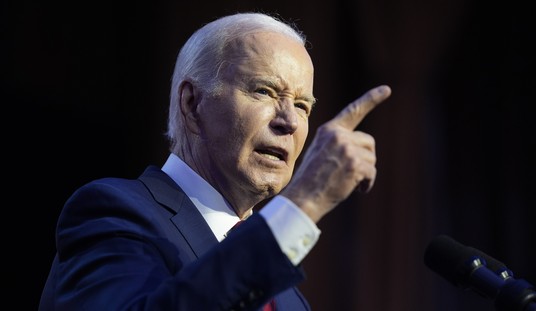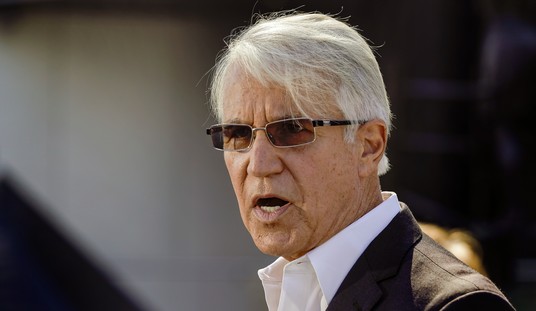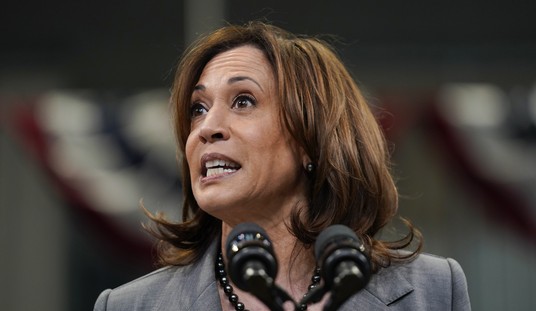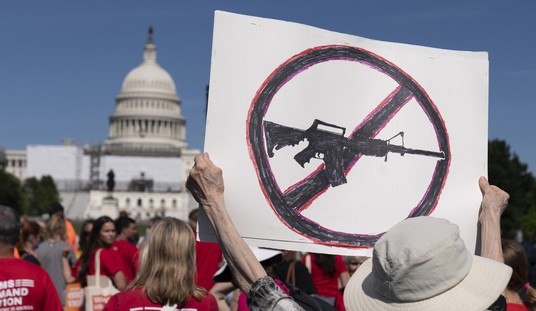How did America win its independence? In Part I of this essay, I looked at the population trends, foreign alliances, and equipment and weather conditions under which the American Revolution was fought. Let’s add some thoughts on the leaders of the principal combatants: the American and British generals. The American command was far from perfect – but the war could have turned out very differently if the American side had not had the advantages of leadership it did, first and foremost the singular character of George Washington.
Washington, Washington: Any history of the Revolutionary War has to consider the unique leadership of George Washington. 43 years old when he assumed command, Washington came to the war with combat leadership experience from the French and Indian War, training as a surveyor that prepared him well to deal with maps and terrain, a decade of active fox hunting that had made him an excellent horseman, and experience in the Virginia House of Burgesses that had educated him in practical politics. Physically, Washington was a man of great strength, vigor and endurance and almost supernatural good luck. Washington’s robust constitution survived smallpox, diphtheria, multiple bouts of malaria, pleurisy, dysentery (in 1755, the 23-year-old Washington had to ride to Braddock’s defeat on a padded saddle due to painful hemorrhoids), quinsy (an abcess of the tonsils that laid him out in 1779) and possibly typhoid. In the rout of the Braddock expedition, Washington had two horses shot from under him and four bullet holes in his coat, yet neither then nor at any time during his military career was Washington wounded despite often being in the thick of battle and presenting an enormously conspicuous target (one of the tallest men in the Continental Army, in the most brilliant blue uniform, mounted on horseback).
But he had his weaknesses: he’d never had command of anything as large, diverse and complex at the Continental Army (whose very name bespoke its ambitions), and while Washington was smart, adaptable, detail-oriented and sometimes inspired, he was not a naturally brilliant military mind: his errors throughout the New York campaign would illustrate that he was no Napoleon, just as – in more fateful ways – Napoleon was no Washington.
I’ve noted before the success of Washington’s frequent tactic of hit-and-run attacks followed by retreats and more retreats. Washington’s overall long-term strategy ended up being one of simply enduring in the field, never putting his whole army at risk until he had the enemy trapped. But it’s crucial to always bear in mind that this strategy ran contrary to everything in Washington’s temperament. By nature, he was an aggressive, audacious military man who loved the offensive. Frequently throughout the war, Washington developed complex and daring offensive plans. Sometimes, as at Trenton in December 1776 and the following year’s effort at a coup de main at Germantown in October 1777, he put those plans in action. The attack at Germantown was designed to catch Cornwallis’ 9,000-man army by surprise with a numerically superior force and destroy it while it was divided from the rest of Howe’s army quartered at Philadelphia. The plan, calling for four columns to fall on the British more or less simultaneously, was too complex and ambitious (the largest Continental Army column arrived late and the two militia columns had little effect) and ended in defeat. But like the 1968 Tet Offensive, it was a morale and propaganda winner for the Americans just to mount such an assault. It raised the Continental Army’s morale, stunned the British command (which had thought Washington beaten and in retreat after the prior month’s defeat at Brandywine that had cleared the way for the occupation of Philadelphia) and, together with the victory at Saratoga, it helped persuade the French that the American war effort was serious and had staying power. Washington’s audacity on this occasion paid dividends even in defeat.
But at least as often, Washington allowed his war council (composed of his subordinates and, after the arrival of the French, Gen. Rochambeau, who made clear that he would defer to Washington’s ultimate decisions) to talk him out of his own overly ambitious plans even after he had drawn them up at length: a hazardous amphibious assault on Boston during the 1775-76 siege (complete with, in one version of the plan, a vanguard of soldiers on ice skates attacking across the frozen harbor); a march on the British war purse at New Brunswick with an army exhausted after Trenton and Princeton in January 1777; an attack on New York in 1780 or 1781 when Rochambeau wanted to chase Cornwallis to Yorktown instead. His willingness to listen to the counsel of cooler heads is what separated the practical Washington from more tactically brilliant but ultimately undone-by-hubris generals from Napoleon to Robert E. Lee.
Relatedly, Washington learned from his mistakes. The desire for decisive battle and protection of politically important turf had led him to risk annihilation of the largest army he would have during the war at the Battle of Brooklyn; thereafter, he would not stage a do-or-die stand to protect any particular spot of land. Washington had signed off on the disastrous 1775 invasion of Quebec; he would resist all further entreaties to stage a second offensive.
If Washington’s decisionmaking was sometimes imperfect, his temperament and leadership were flawless. Washington was neither deluded nor emotionless; time and again, his correspondence showed him verging on despondency at the condition of his army and the perils it faced, and we know he was capable of towering rages. But in the presence of his men (who were apt to get too high after heady victories and too low in defeat) and occasionally his adversaries, he never projected anything but steady confidence and endurance. Washington was not, perhaps, a nice man; even his close associates tended to regard him as the same distant marble statue we see him as today (Hamilton once bet a colleague at the Constitutional Convention a dinner if he’d go slap Washington on the back and act familiar with him; Washington pried his hand off and froze him with such a stare he told Hamilton afterwards he wouldn’t try it again for anything). But Washington put tremendous, conscious effort into acting the part of a great man at all times in order to become one. Washington had his vices, chief among them his ownership of slaves, but his virtues were almost a textbook of the qualities needed of the leader of a long, dangerous struggle through major adversity: perseverance, discipline of himself and others, attention to detail, fairness, integrity, resourcefulness, physical courage, endurance of hardship, and an unblinking practicality. There’s a great story about Washington breaking up a snowball fight that escalated into an enormous brawl between soldiers from Massachusetts and newly-arrived Virginia riflemen in Harvard Yard during the siege of Boston, possibly with racial overtones due to the presence of black soldiers in the Massachusetts regiment; a young observer recounted:
Reinforced by their friends, in less than five minutes more than a thousand combatants were on the field, struggling for the mastery.
At this juncture General Washington made his appearance, whether by accident or design I never knew. I only saw him and his colored servant…both mounted. With the spring of a deer, he leaped from his saddle, threw the reins of his bridle into the hands of his servant, and rushed into the thickest of the melee, with an iron grip seized two tall, brawny, athletic, savage-looking [Virginia] riflemen by the throat, keeping them at arm’s length, alternately shaking and talking to them.
In this position the eye of the belligerents caught sight of the general. Its effect on them was instantaneous flight at the top of their speed in all directions from the scene of the conflict. Less than fifteen minutes time had elapsed from the commencement of the row before the general and his two criminals were the only occupants of the field of action.
You didn’t mess with George Washington. But men would follow him anywhere.
Greene and Knox: The Continental Army’s leaders were a mixed bag, and more than a few of those who served with distinction are largely forgotten today. If there are two names besides George Washington that every American schoolchild should learn from the Revolutionary War, it’s Nathanael Greene and Henry Knox. Of all the Continental Army’s generals, only Washington, Greene and Knox served the entire duration of the war. While men like Charles Lee, Horatio Gates, Ethan Allen and Benedict Arnold contributed more than their share of ego, drama, and backbiting, both Greene and Knox were unswervingly, uncomplicatedly loyal both to Washington and the cause he fought for. In the long run, that served them better than any thirst for glory. Greene was offered the post of Secretary of War under the Articles of Confederation; when he declined, Knox took the job and continued to hold it under Washington’s presidency.
As soldiers, Greene and Knox were emblematic of one of the major characteristics of early America: they were self-educated, learning most of what they knew of military matters from books. Formal education was spotty in the colonies; even Washington, as a wealthy Virginia planter, never went to college and was mainly what we would call today “home schooled.” Yet early Americans didn’t let a lack of schooling bar them from the quest for knowledge. Ben Franklin had nearly no formal education at all, but by the closing decades of his public life was arguably the world’s most respected intellectual. Knox was educated at Boston Latin, but unschooled in war; his military experience was five years in an artillery company of the Massachusetts militia. Greene had neither schooling nor military experience, but read whatever he could get his hands on. At the outset of the war, they were young small businessmen: Knox a 25 year old bookseller from Boston, Greene a 32-year-old Quaker from Rhode Island who ran the family forge. Both prepared for combat by reading books on military strategy and tactics; had there been a “War for Dummies” in 1775, they would have read it without embarrassment. (Washington, too, ordered a number of military volumes when heading off to Philadelphia in 1775; as Victor Davis Hanson has noted, one of the distinctive features of Western civilization is a long written tradition of military science, allowing the widespread dissemination of the latest ideas about warmaking). Yet, self-educated though they were, they knew what they were missing: Knox spent years agitating for the establishment of an American military academy to teach the art of war, which would eventually be founded at West Point under the Jefferson Administration.
Knox pulled off perhaps the most remarkable and dramatic feat of the war in the winter of 1775-76, when a team led by he and his brother made the long, snow-covered trek from Boston to Fort Ticonderoga in upstate New York, loaded up all its heavy artillery, returned with every single artillery piece intact, and then in one night in March set up the guns on Dorchester Heights, the peninsula overlooking Boston from the south. The British were staggered, and forced to evacuate. The full tale, as told by David McCullough in 1776, is as amazing as anything in American history, and I can’t hope to do it justice here. Knox would go on to prove himself time and again as the chief artillery expert in the Continental army from Boston to Trenton (where his guns commanded the center of the town) all the way through Yorktown (where the shelling of Cornwallis’ encampment brought him to his knees), and would be present for all of Washington’s major engagements. Knox’ amateurism led him astray on occasion; a few of the guns under his command exploded on their handlers in Boston and again later in New York, and he is generally credited with the misguided decision to send waves of troops against a barricaded position at Germantown on the basis of an inflexible application of the maxim (which he’d probably picked up from a book) about not leaving a fortified position to your rear. But his overall record was one of practicality, resourcefulness and unwavering dedication to the cause.
As for Greene, he too can be found at all Washington’s major battles of the first half of the war, as Washington’s operational right-hand man; the Quartermaster General of the Army after Valley Forge; the commander (with Lafayette) of the first joint operation with the French, a failed effort to break the occupation of Newport, Rhode Island; and finally Washington’s choice to assume command of the southern theater of the war after the serial failures of Robert Howe at Savannnah, Benjamin Lincoln at Charleston and Horatio Gates at Camden. The fiasco at Camden ended the military career of Gates, the victor of Saratoga, and left the Continental Army in the South in shambles, but it would prove Greene’s finest hour. Greene had little time to rebuild the shattered army; he rarely commanded more than a few thousand men, and often had to rely on the aid of the local militia. And yet, with a major assist from those militia, he staged a brilliant series of retreats and maneuvers to keep Cornwallis from taking control over the region or from capturing and crushing his army. It was Greene who said of this campaign, “We fight, get beaten, rise, and fight again.” After the costly March 1781 Battle of Guilford Court House, Cornwallis came to the decision that he needed to stop chasing Greene around the Carolinas and head north to Virginia, setting in motion the fateful chain of events that led to Yorktown.
Unfortunately, and characteristically of life in the 18th century, many of the leading figures of the Continental Army and Revolutionary militia did not live that long after the war’s end, including Greene, who died of sunstroke at age 43. Charles Lee died in 1782, Lord Stirling in 1783, Greene in 1786, Ethan Allen in 1789, Israel Putnam in 1790, John Paul Jones in 1792, John Sullivan and Francis Marion in 1795, Anthony Wayne in 1796, and Washington himself in 1799. While numerous places in the United States today bear their names (here in New York, Greene as well as Putnam, Sullivan and militia leader Nicholas Herkimer are the namesakes of counties), their popular memories today are less vivid than Revolutionary War figures like Alexander Hamilton who had more prominent political roles. But nobody aside from Washington himself contributed more to victory than Greene and Knox.
The European Adventurers: The American cause was, of course, aided as well by a handful of Continental European volunteers – Marquis de Lafayette, Baron von Steuben, Casimir Pulaski, Tadeusz Kosciuszko, Baron de Kalb (this is aside from some of the American leaders like John Paul Jones and Charles Lee who were native to the British Isles). Two of those, Pulaski and de Kalb, were killed in battle in the early unsuccessful battles of southern campaign, Pulaski at Savannah and de Kalb at Camden. Both Lafayette and Kosciuszko would return to try – with mixed success – to lead their own homelands to a republican future; Jones would serve in Catherine the Great’s navy after the war, terrorizing the Turkish navy and becoming an honorary Cossack in the process. Only von Steuben would enjoy a quiet life in his adopted country.
Lafayette’s exploits, especially during the Yorktown campaign, were significant and memorable, and in a general sense he contributed to the cementing of the alliance with France. And Pulaski played a key role in organizing the American cavalry. But von Steuben was likely the most important to the Continental Army’s victory.
In contrast to the self-educated citizen soldiers running the American army, von Steuben came from the opposite end of the 18th century military spectrum: born a sort of aristocrat and a Prussian army brat, he had served as a staff officer on the professional Prussian general staff, the first of its kind in the world, and been instructed by Frederick the Great himself. Unlike some of the other Europeans – but like Jones, who fled to America because he was wanted for the murder of a sailor he had flogged to death – von Steuben was no starry-eyed idealist. He was an unemployed professional soldier, deeply in debt, who came to the American cause only after running out of prospective employers in Germany, and was trailed by an unverified rumor that he was fleeing prosecution for being “accused of having taken familiarities with young boys.” He was passed off to Congress, perhaps knowingly and possibly with the complicity of Ben Franklin (who recognized his value), as one of Frederick the Great’s generals rather than a captain on the general staff, and even his aristocratic title had been inflated and possibly invented. He spoke little or no English and often asked his translator to curse at the soldiers on his behalf.
But whatever his background, von Steuben’s discipline and professional rigor was crucial. He established badly-needed standards for sanitary conditions in the army, introduced training in use of the bayonet, and taught the men the sort of manuevers that were essential to 18th century warfare. He is, on the whole, credited with the improved drill and discipline that emerged from Valley Forge and was displayed in the 1778 Battle of Monmouth. Monmouth, in combination with the French entry into the war, induced the British to mostly abandon the strategy of trying to hunt down Washington’s army and focus instead on offensive operations in the South. Von Steuben’s field manual was still the U.S. Army standard until the War of 1812. If Greene and Knox are emblems of traditional American virtues, the Continental Army’s debt to von Steueben and the other Europeans is emblematic of America’s adaptability and openness to the contributions of new arrivals.
The British Command: While there were many important figures on both sides of the war – I’ve only scratched the surface here on the American side – essentially all the important decisions on the British side were made by six generals: Gage, Howe, Clinton, Cornwallis, Burgoyne, and (in Quebec in 1775-76) Guy Carleton (Carleton also briefly commanded the British evacuation of New York in 1783 at the war’s end). Where they went wrong provides an instructive contrast with Washington’s command.
All six were professional military men, veterans of the Seven Years’/French and Indian War: Clinton, Cornwallis and Burgoyne had fought only in Europe, while Howe and Carleton had fought in the Quebec campaign that culminated in Wolfe’s capture of the fortified city, and Gage had been a part of the Braddock expedition and thus seen Washington up close in action. And by and large, with the arguable exception of Gage, they fought with tactical skill and professionalism against the Americans. Yet they have gone down in history as architects of a great failure, weak in comparison to predecessors like Wolfe and dwarfed by the likes of Wellington who succeeded them. Aside from Carleton, only Cornwallis really survived the war with his domestic reputation and career intact, going on to years of highly influential service as a colonial administrator in Ireland and India that shaped the Empire in important ways. Howe was the only other one of the six besides Cornwallis to command troops in combat again, for a time during the early Napoleonic Wars.
The British failure was partly a matter of the personalities involves, but also one of basic strategic incoherence. They never really had a fully thought-out strategy. Only Clinton and Cornwallis really seemed to understand the paramount importance of putting Washington’s army out of business early in the war, and their aggressive plans of flanking attacks and hot pursuits were frequently overriden by Gage and Howe, who were less apt than Washington to heed the good advice of their subordinates. Washington learned from his mistakes; Howe, in particular, did not, on multiple occasions settling down to stationary positions when he should have been finishing off Washington.
The British could have adopted a scorched-earth approach like Sherman in the Civil War; General James Grant urged the burning of major cities in the North, and in the southern campaign Banastre Tarleton’s forces (including Loyalist partisans) did what they could to spread terror in the countryside, including some notorious examples of bayoneting wounded or surrendering Americans. Cornwallis near the end of the war in Virginia would set thousands of slaves free as a foreshadowing of Lincoln’s Emancipation Proclamation, albeit solely for tactical purposes. But, as regular forces facing guerrilla insurgencies often do, they took a halfway path that was the worst of both worlds: heavy-handedness and occasional atrocities were crucial to raising the militia against Burgoyne in New York and Cornwallis and Tarleton in the Carolinas, yet they failed to pursue a sufficiently merciless approach to annihilate the Continental Army or destroy its economic base of support.
Like the Americans, the British were riven by petty jealousies and contending egos; unlike the Americans, they never had a Washington to keep those divisions from impeding operations, and unlike the Americans, their civilian government was too far away to provide supervision. Burgoyne’s appointment to lead the Saratoga expedition alienated both Carleton, who resigned in protest, and Clinton. In the case of Clinton, while he was usually right about tactics (notably his preference for outflanking the militia from the rear at Bunker Hill and for encircling Washington in New York), his flaw (which probably contributed to his advice being ignored) was his inability to work well with others. Though not entirely through faults of his own, it was Clinton’s failure to arrive with timely reinforcements that led to the surrenders of Burgoyne at Saratoga and Cornwallis at Yorktown.
The human element of good generalship can be fortuitous, but it is also a product of the civilian and military cultures that produce armies. In the long run, the Americans had a clearer strategy, greater unity of purpose and command and more adaptable leadership, and that made the difference.
In Part III: the role of the militia.













Join the conversation as a VIP Member